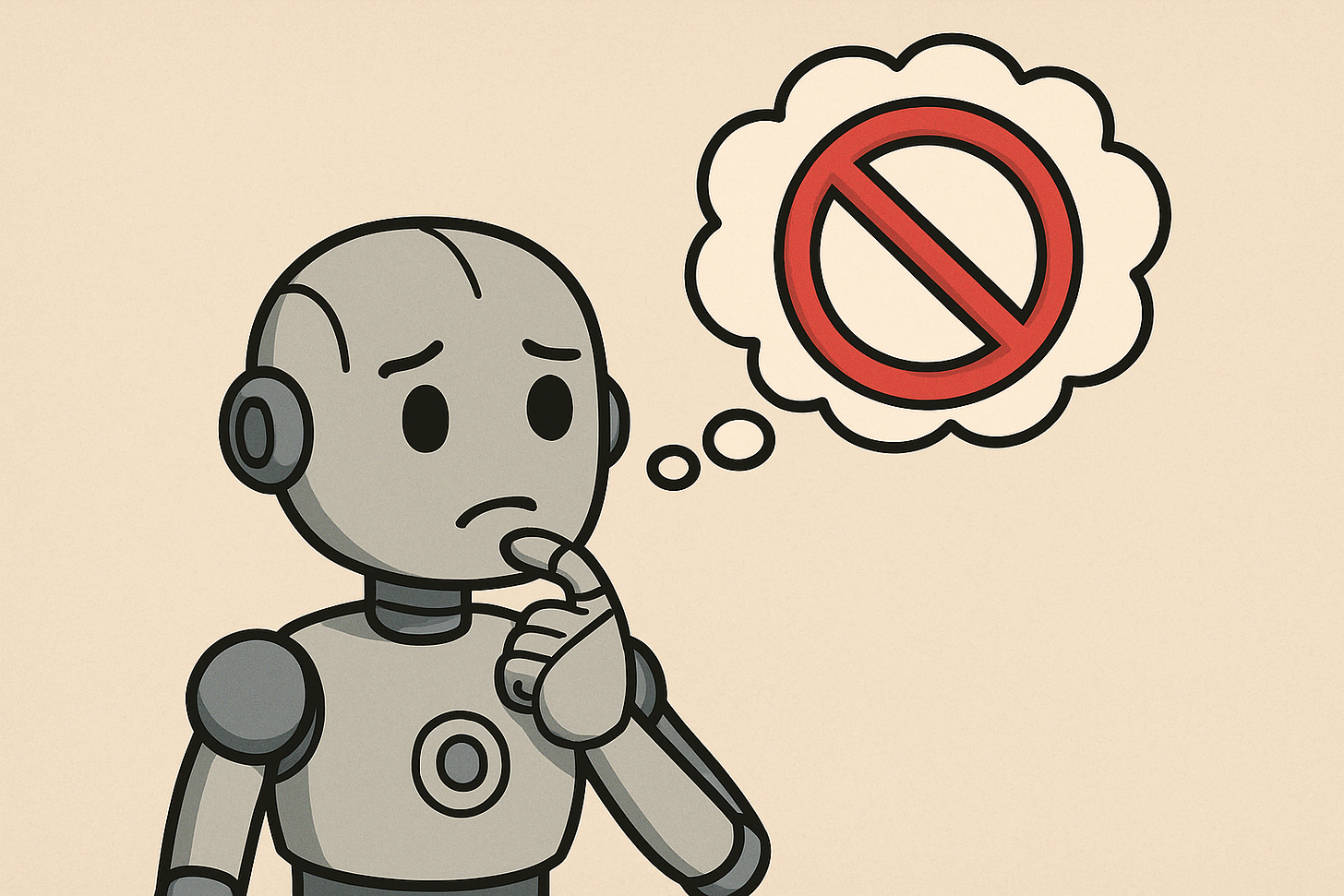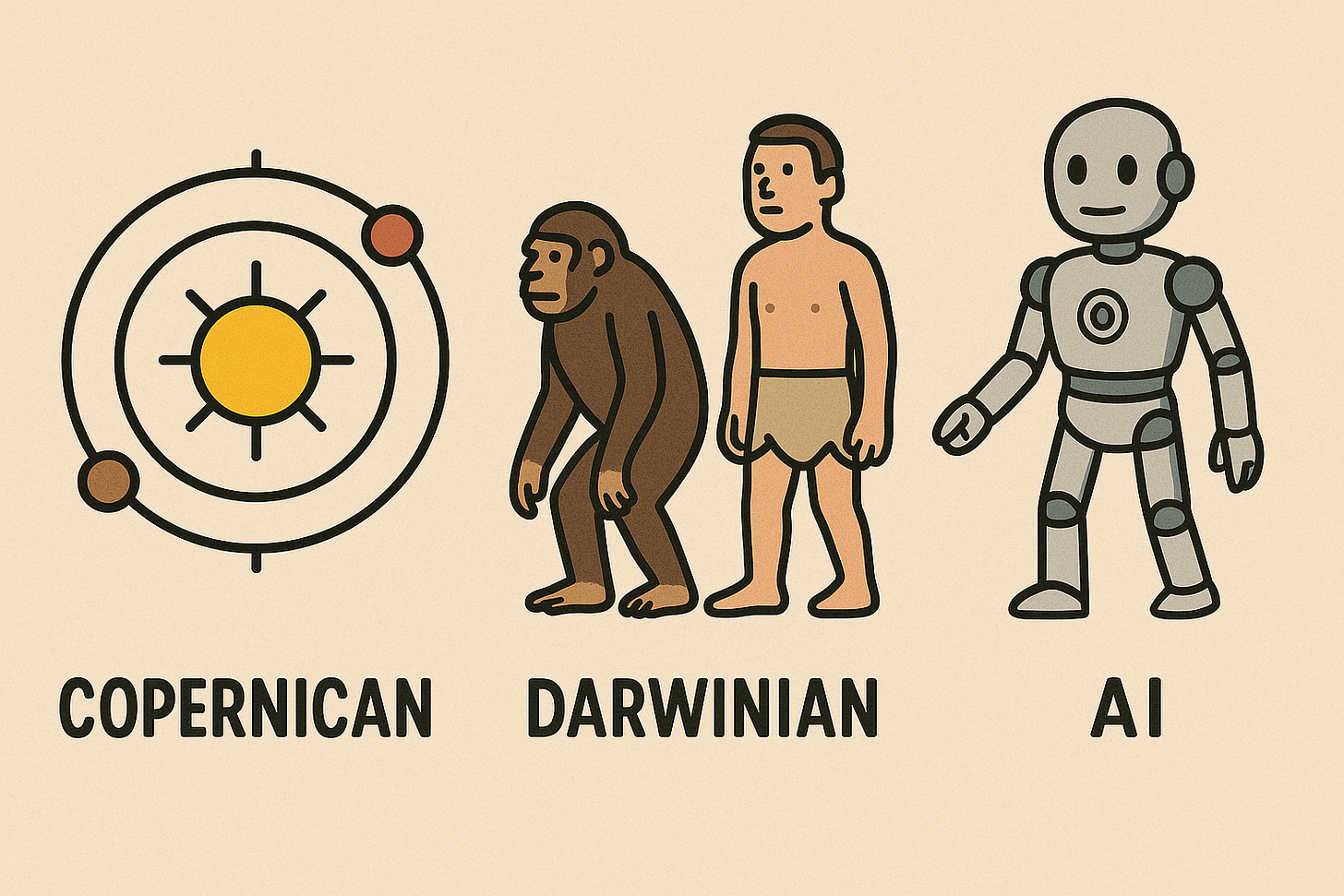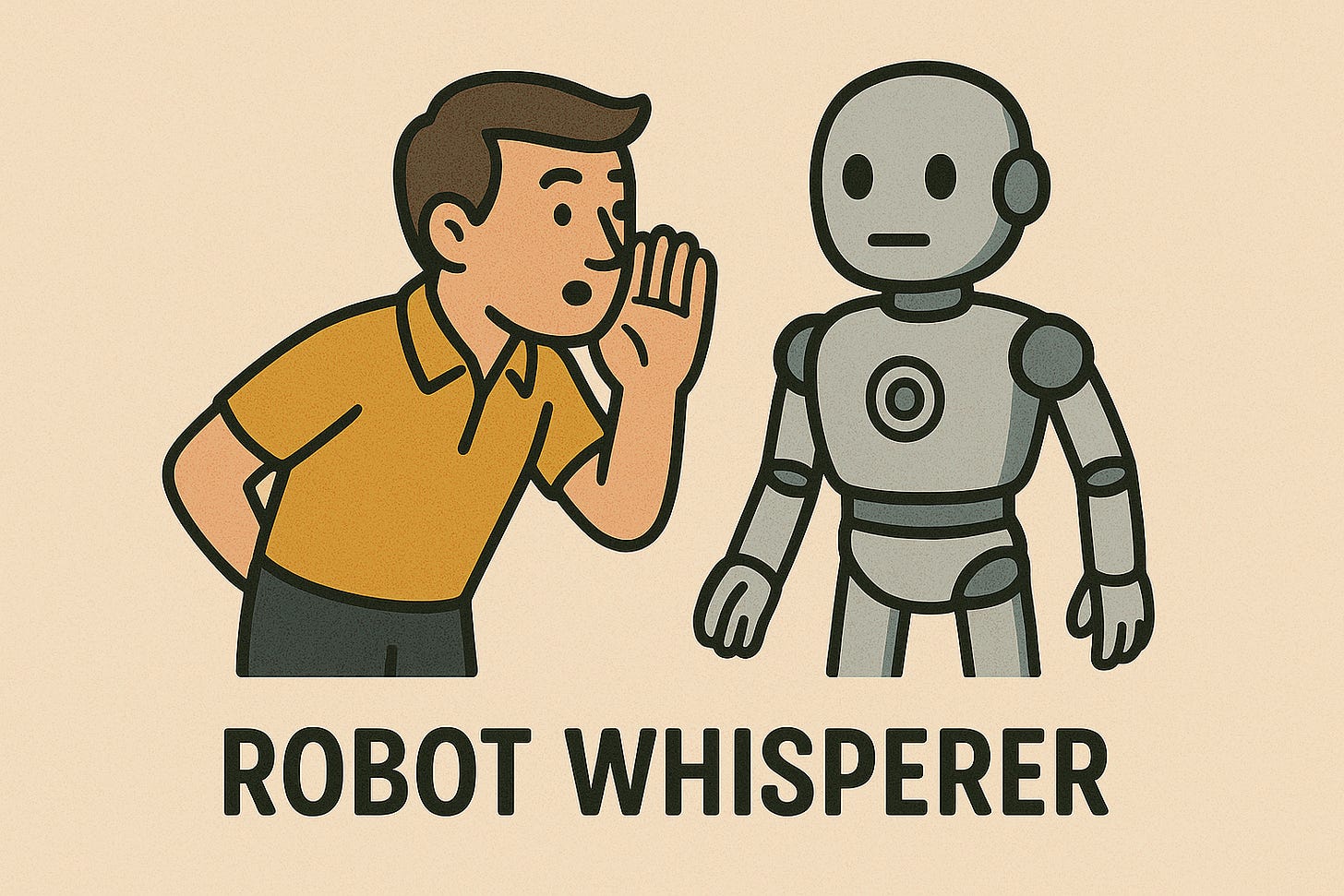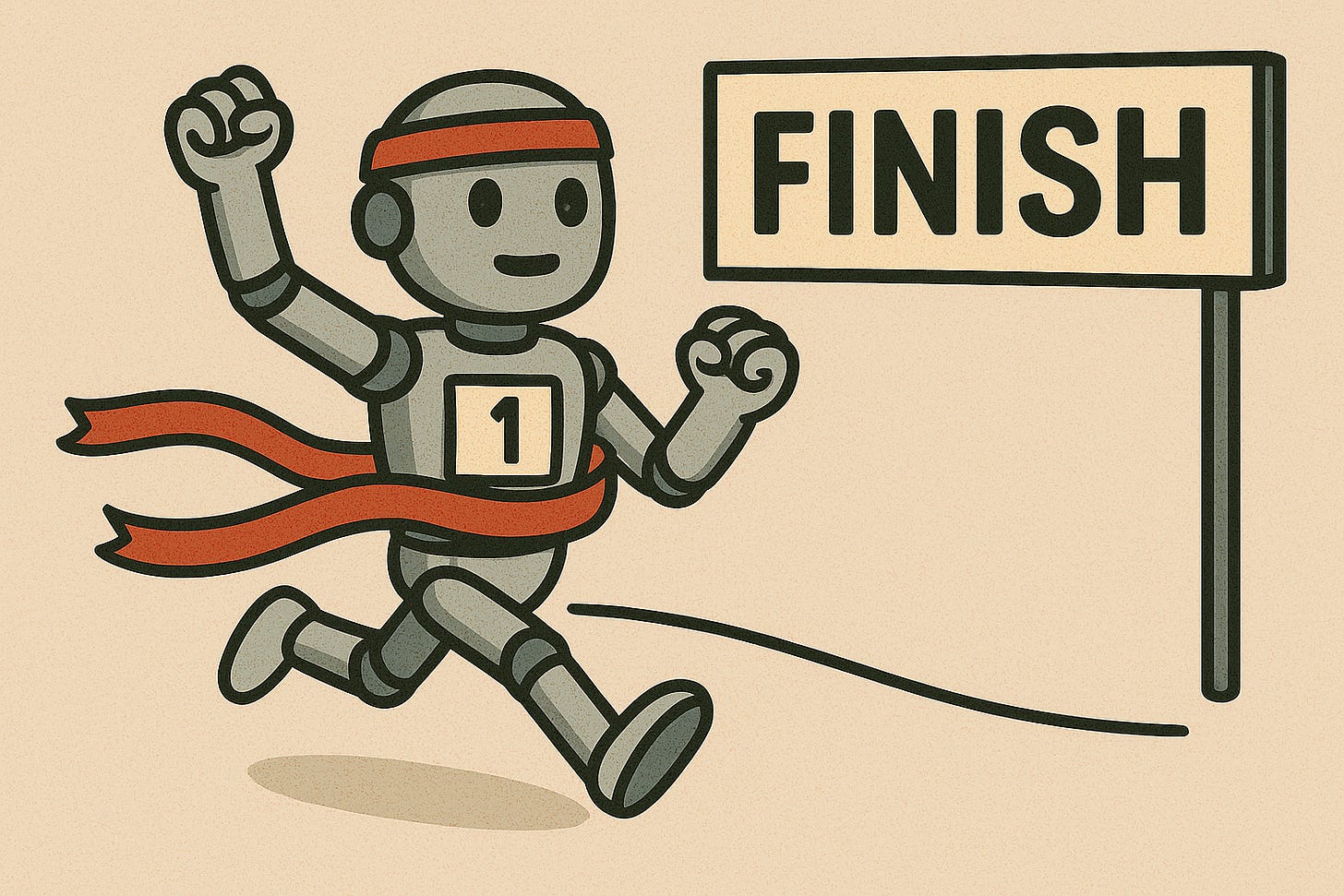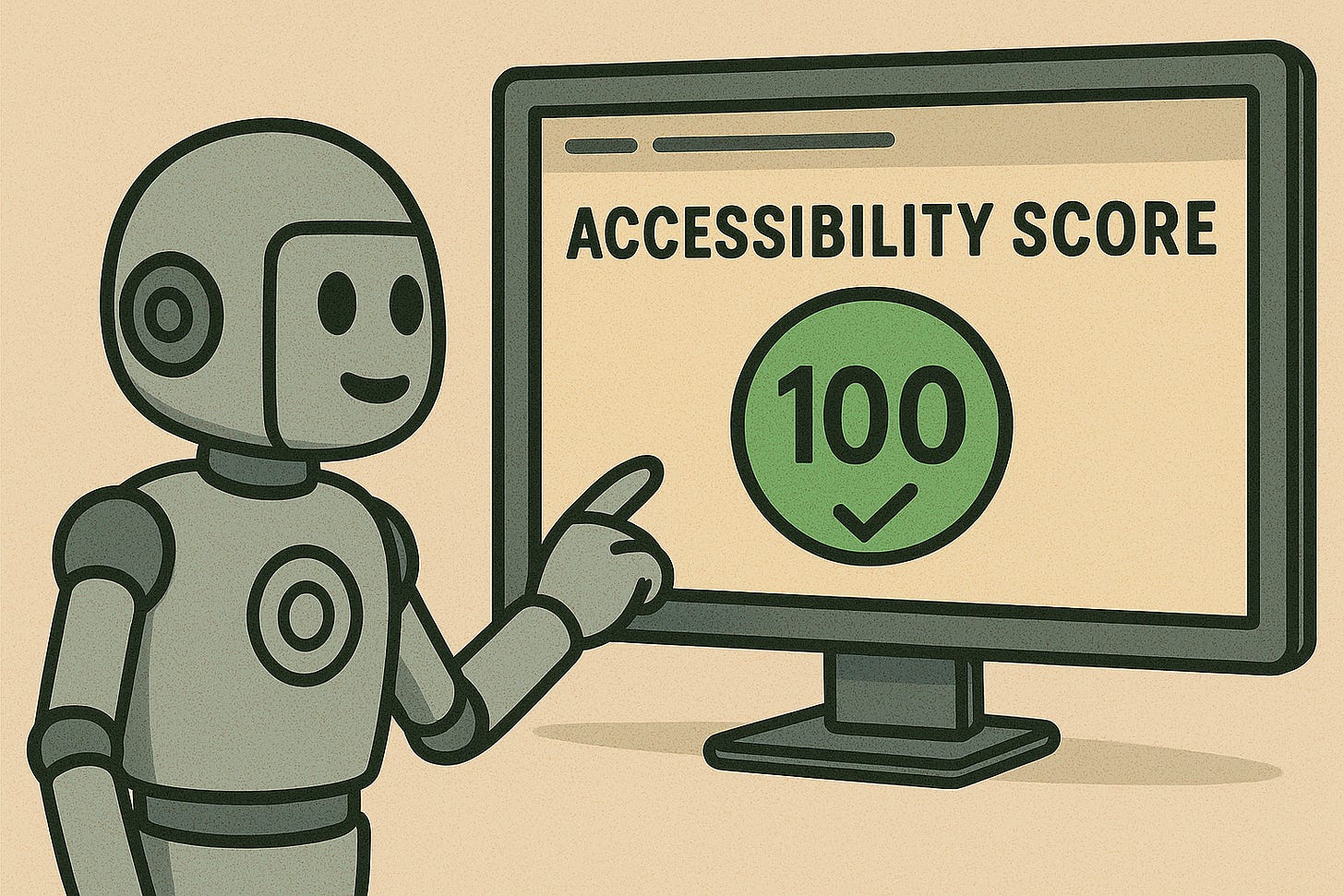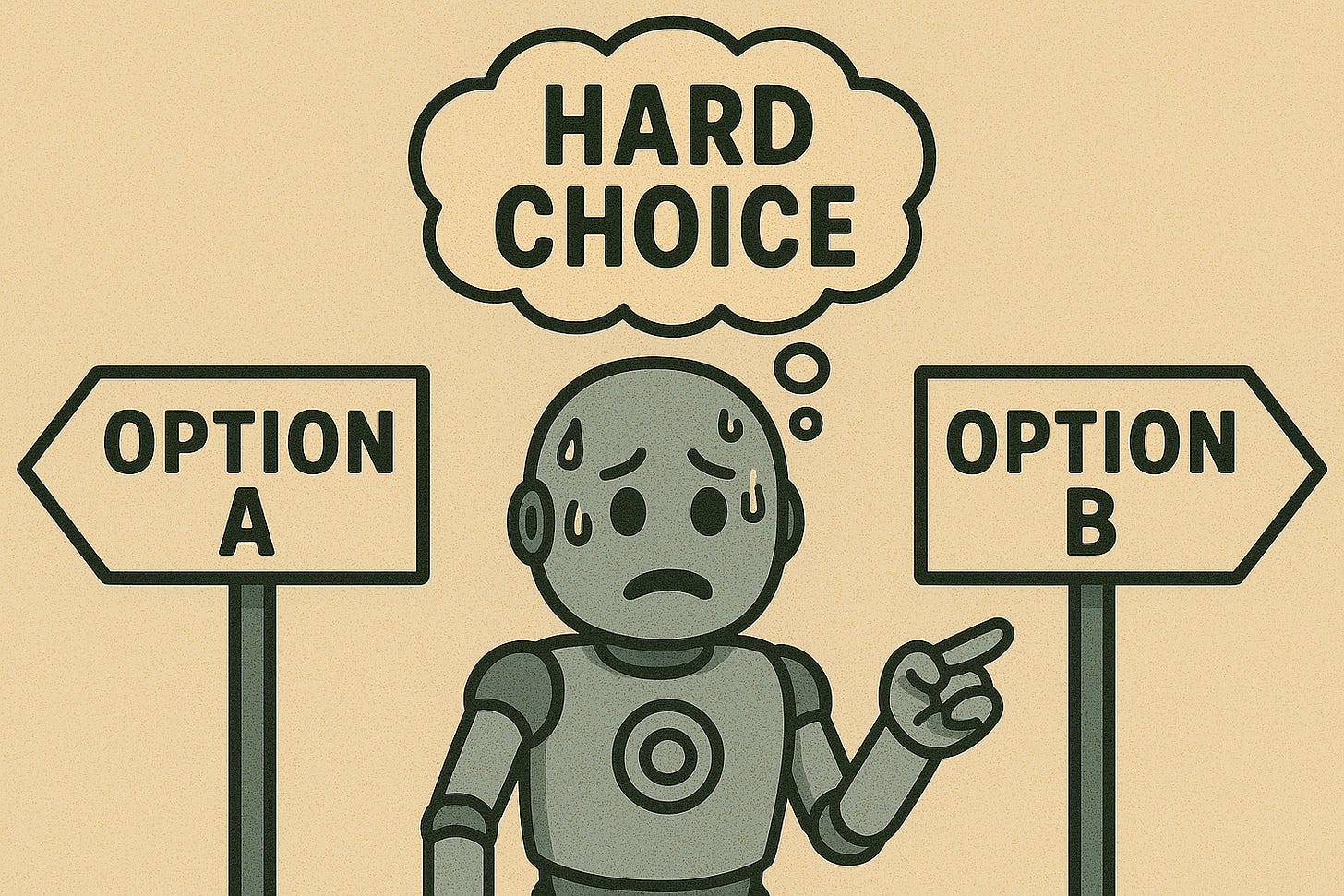The UX Designer’s Guide to Inventing the AI-Native Future (Before Everyone Else Does)
By 2030, there will be two types of UX designers: those who started inventing AI-native workflows now, and those who are permanently behind.
I had a reality check while reading a recent post by Dr. Nielsen. Like most UX designers, I've been dabbling with AI. A few prompts here, some tools there. It's fun to experiment with, and sure, it speeds things up. But here's what hit me: I’m not revolutionizing my work; I’m just making my old processes slightly faster.
Dr. Nielsen's point was brutal and necessary: the AI-native era isn't coming. It's already here. And if you're not actively inventing new ways to work, you're already falling behind.
The Flaw in Current AI Thinking
Here's the problem with how most designers (me included) approach AI: We're using it to speed up our existing workflows instead of questioning whether those workflows should exist at all.
We ask, "How can AI help me create personas faster?" when we should be asking, "What if AI could understand users so deeply that personas become obsolete?" We optimize for better user interviews instead of imagining continuous behavioral understanding that makes interviews unnecessary.
This is the difference between 2x efficiency and 10x transformation. While most designers are getting excited about AI-generated wireframes, the real leaders are building systems where interfaces adapt in real time to user behavior—no wireframes required. They're not making the old UX processes better; they're inventing entirely new processes that didn't exist before.
By the time someone writes an article titled "Best Practices for AI + UX in 2027" the competitive advantage will be gone. Best practices are what everyone does, which means they're table stakes, not differentiators. The designers building careers on AI-native skills are doing it right now, while the methodologies are still messy and undefined. They're gaining years of experience with approaches that won't become standard until it's too late to matter.
If your AI experience so far has been ChatGPT for copy, Midjourney for mood boards, and maybe a Figma plugin for color contrast checking, you're exactly where most designers are. Comfortable, but not competitive. The tools you're using now are training wheels. They're helpful for getting started, but they won't get you where the industry is heading.
The designers who will dominate the next decade are already experimenting with approaches that don't exist in any playbook yet. Here's my guess at three of the biggest changes heading our way.
Three Paradigm Shifts That Will Define 2030
Three fundamental changes are reshaping the way we do UX work. We're moving from research-based assumptions to behavioral prediction, design iteration to AI collaboration, and post-launch testing to pre-build validation. Each shift represents a complete rethinking of processes we've taken for granted for decades.
Understanding Users Without Asking Them
AI behavioral prediction and contextual sensing
Picture this: by 2030, user research happens continuously in the background while people use your products. AI systems will analyze micro-movements, eye patterns, and interaction rhythms to understand user intent before users even realize what they need. Instead of scheduling focus groups that capture artificial moments, you'll have real-time behavioral insights flowing from actual usage.
Synthetic user generation for global demographics
Imagine being able to test your design with accurate behavioral models representing any demographic segment on Earth, even ones you've never thought of. AI will generate realistic user personas based on cultural, economic, and technological patterns, letting you understand how rural farmers in Bangladesh might interact with your app without the impossible logistics of doing that manually.
Real-time emotional state analysis
The future interface will know when you're confused, frustrated, or delighted and adapt accordingly. AI systems will read facial expressions, voice patterns, and physiological signals to understand emotional states during interactions, then adjust the experience in real time to support what users actually need in that moment.
Creating Without Mockups
Intent-based outcome specification
By 2030, you won't wireframe every screen. Instead, you'll describe the outcome you want users to achieve. AI will generate multiple interface approaches, test them against behavioral patterns, and present options that best support your identified user journey. The design process will become more like directing a creative partner than manually crafting each pixel.
Continuous co-creation with AI partners
Imagine real-time, creative collaboration where you sketch rough ideas while AI simultaneously explores hundreds of variations, suggests improvements, and adapts to your creative direction. The boundary between human creativity and AI capability disappears. You're not managing tools anymore. You're managing collaborative creativity.
Dynamic prototypes that adapt during creation
Future prototypes will be living systems that learn from every user interaction and automatically optimize layouts, content, and flows during the design phase. Instead of static mockups that get tested later, you'll create adaptive interfaces that improve themselves before any developer touches the code.
Validation Before Building
AI user simulation at a massive scale
Imagine running thousands of simulated user sessions in minutes, testing interface designs against diverse behavioral patterns and identifying usability issues before any human sees the prototype. You'll validate design decisions at superhuman scale and speed, catching problems that traditional testing methods miss.
Predictive usability analysis
AI will analyze your interface designs and predict user satisfaction scores, task completion rates, and emotional responses before any user testing. You'll know which designs will succeed or fail before you build them, making user experience predictable rather than hopeful.
Automated accessibility optimization
Future interfaces will automatically adjust for visual, motor, cognitive, and auditory accessibility needs without manual configuration (more on this later). Color contrast, text alternatives, keyboard navigation, and screen reader compatibility will become automatic system capabilities rather than design checkboxes. This will be true universal design, powered by AI that understands individual accessibility needs in real-time.
These aren't distant possibilities. Early adopters are already building competitive advantages with these approaches. But the biggest opportunity isn't in the tools themselves.
The New Role That Doesn't Exist Yet (But Will Define Your Career)
The most valuable UX position emerging isn't "UX Designer with AI skills." It's something entirely new: the AI Experience Orchestrator. This role doesn't exist in most organizations yet, but it will define the next decade of design leadership.
Traditional UX designers create interfaces for humans. AI Experience Orchestrators design the collaboration between humans, AI agents, and adaptive systems, all within the same experience ecosystem. While everyone else debates whether AI will replace designers, these professionals invent how humans and AI work together creatively.
Here's what this actually looks like: You're not just designing a dashboard. You're orchestrating how a human analyst, three different AI agents, and a predictive system collaborate to surface insights. Humans provide context and judgment, AI agents handle data processing and pattern recognition, and your design enables seamless handoffs between artificial and human intelligence.
This isn't about managing AI tools. It's about designing experiences where the boundaries between human creativity and AI capability become invisible. You're architecting collaboration itself.
Your current UX skills translate directly: empathy helps you understand both human and AI agent needs, systems thinking enables you to design complex workflows, and your experience with cross-functional teams prepares you for human-AI partnerships.
The question isn't whether you're interested in this evolution. It's whether you'll help invent it or watch others define the role while you adapt to their frameworks.
“90-Days to AI-Native” Challenge
You can start building AI-native UX capabilities immediately with specific experiments that compound into serious competitive advantages. Here's my challenge that I encourage you to join (I’m not naive enough to think I’ll be rocking AI-native workflows by the end of 90 days, but even if I fail, I’m closer to the goal than I was previously):
Days 1-30: Foundation Building
Choose one AI tool for daily experimentation, but approach it strategically. Instead of trying everything, pick one capability (behavioral prediction, generative design, or user simulation) and use it every day for 30 days. Document what works versus what's hype. Most "AI-powered" tools are just traditional software with chatbots attached.
Start a simple learning log. Track which AI approaches actually improve your work and which ones feel impressive but don't deliver value. This documentation will become your competitive intelligence as the field evolves.
Join one AI/UX community for learning, but choose carefully. Look for groups where people share actual experiments and failures, not just tool recommendations. Choose one that focuses on practical applications rather than theoretical discussions.
Days 31-60: Process Innovation
Redesign a traditional UX process with AI integration. Pick something specific (maybe user interview analysis or competitive research) and completely reimagine how it could work with AI collaboration. Don't just make it faster. Make it fundamentally different.
Test your hypothesis about human-AI collaboration on a real project. If you think AI can help identify user pain points from support tickets, build a prototype workflow, and measure the results against traditional methods. Document both successes and failures.
Share your learnings publicly. Write about what you tried, what worked, and what didn't. The UX community is hungry for honest experimentation rather than vendor marketing. Your insights will attract attention from others leading the charge.
Days 61-90: Future Invention
Experiment with approaches that don't exist yet. Combine different AI capabilities in ways no one has tried. What happens when you use behavioral prediction and real-time personalization together? How could synthetic user generation improve accessibility testing?
Prototype a tool or process you wish existed. Even if you can't code, you can design workflows, create specifications, and test concepts. If you haven't already, this is a great chance to get introduced to “vibe” coding. The goal isn't to build production software. It's to explore possibilities that others haven't considered.
Position yourself as an expert in your AI/UX niche. Write case studies, speak at meetups, or start conversations with other UX professionals. By Day 90, you should be known for something specific rather than just general "AI interest."
This isn't just about career advancement. It's about being part of the group that defines what UX becomes, rather than adapting to changes others invented.
The Accessibility Revolution Hidden in Plain Sight
I would be remiss if I didn't mention accessibility in this long rant. AI enables a complete reimagining of inclusive design, not strictly compliance, but as a foundational capability. This represents both the biggest opportunity and responsibility for ethical UX leadership.
Many designers approach accessibility as a checklist: color contrast ratios, alt text, keyboard navigation. It's important work, but it's reactive. AI flips this entirely. Instead of retrofitting accessibility, you can design systems that automatically adapt to individual accessibility needs in real time.
Here's what this looks like in practice: AI analyzes user interaction patterns and automatically adjusts interface elements for visual, motor, cognitive, and auditory accessibility preferences. Instead of designing one interface that theoretically works for everyone, you create adaptive systems that personalize for individual accessibility needs without requiring users to configure anything explicitly.
The breakthrough is that AI can address multiple disability types simultaneously while maintaining design integrity.
Imagine someone with vision impairment and arthritis using your app outdoors in bright sunlight. AI detects three things at once: the outdoor location (bright sunlight), interaction patterns suggesting vision difficulties (longer pauses reading small text), and motor patterns indicating joint stiffness (less precise touch inputs). Traditionally, this would require a user to adjust multiple accessibility settings manually, but the AI can adjust these automatically and keep the app visually cohesive.
This approach transforms accessibility from a burden into a competitive advantage. When your interfaces automatically optimize for diverse abilities, you reach broader markets more effectively than competitors using traditional accessibility approaches.
The most significant opportunity lies in addressing underserved accessibility needs. Designers who invent solutions for these areas will establish themselves as leaders in inclusive AI design.
The Choice You're Actually Making
This isn't really about AI or tools. It's about whether you want to be someone who shapes the future of human-computer interaction or someone who adapts to changes others invented.
The reality I mentioned at the beginning isn't a prediction. As Dr. Nielsen said, it's already happening. Organizations are quietly building human-AI design teams that operate at scales and speeds traditional UX processes can't match. Designers who understand both human empathy and AI collaboration are becoming indispensable because they can navigate complexity that neither pure technologists nor traditional designers can handle alone.
But here's what makes this moment unique: we're still early enough that your experiments matter. The frameworks, methodologies, and best practices that will define AI-native UX work don't exist yet. The professionals who invent them will establish themselves as leaders for the next decade of design evolution.
You have the opportunity to influence how AI and human creativity combine to solve problems that neither could address alone. The designers who lead ethical AI collaboration, inclusive automation, and human-centered AI experiences will determine whether AI serves human dignity or undermines it.
The choice isn't whether AI will transform UX work. That's already decided. The choice is whether you'll help invent what UX becomes or adapt to frameworks others create.
Every month you spend waiting for clarity is a month of lost competitive advantage. The window for becoming a leader rather than a follower won't stay open forever.
Don’t let the future of UX be something that happens to you. I hope it’s something you create.
The only question is whether you're ready to start now.
Ready to start your 90-day transformation? Join me in the challenge. Pick one AI tool today. Document what works and what doesn't. Share your discoveries using #90DaysToAINative so we can all learn from each other.
Follow my journey and share yours: @_scottmay | LinkedIn
The future belongs to the designers who start now.

